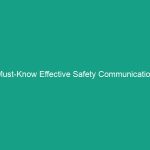Introduction
Good morning team! Today, we’re going to talk about a crucial aspect of our work: Essential Climbing Gear Inspection for Towers. This topic is important because ensuring our climbing gear is in top condition can prevent accidents and injuries on the job. As you know, tower work involves significant risks, and proper gear inspection can make all the difference in keeping everyone safe.
Understanding Essential Climbing Gear Inspection
So, what exactly is essential climbing gear inspection? It refers to the systematic evaluation of equipment such as harnesses, ropes, carabiners, and helmets before we use them during tower climbing. Proper inspection is critical because it helps identify wear and tear, ensuring that our gear performs as expected during operations.
Many employees may believe that as long as the equipment looks fine, it’s safe to use. This misconception can lead to serious accidents. Remember, it’s not just about appearance; it’s about functionality and reliability.
Key Hazards, Risks, and Safety Considerations
When it comes to climbing gear, several Hazards and risks can arise:
- Worn Out Equipment: Harnesses and ropes can degrade over time. A frayed rope can snap under pressure, leading to falls.
- Faulty Gear: Equipment that has been improperly stored or maintained may fail during use.
- Environmental Factors: Exposure to extreme weather can affect gear integrity, such as UV damage on ropes.
Ignoring these risks can result in catastrophic consequences, including severe injuries or even fatalities. For instance, a worker fell from a tower last year due to a malfunctioning harness that had not been inspected properly.
Best Practices, Procedures, & Actionable Advice
To ensure Safety, here are some Best Practices and Procedures you should follow when inspecting your climbing gear:
Step-by-Step Gear Inspection Procedure
- **Visual Inspection:** Start with a thorough visual check of all gear. Look for any signs of wear, fraying, or damage.
- **Functional Testing:** Test the gear’s functionality. For example, check that carabiners open and close smoothly and that harness buckles engage properly.
- **Check Expiration Dates:** Some gear has a limited lifespan; ensure that all items are within their usage timeframe.
- **Manufacturer’s Guidelines:** Always refer to the manufacturer’s guidelines for specific inspection protocols.
Real-life example: A climber once ignored the visual inspection of a rope, which resulted in a near-fatal accident. The rope had deep cuts that were not visible until inspected closely. Always take the time to inspect your gear!
Regulations, Standards, and Compliance
Compliance with safety Standards isn’t just a legal requirement; it’s a life-saving necessity. OSHA and ANSI standards provide guidelines for climbing gear inspection and Maintenance. These Regulations ensure that all equipment meets safety criteria, helping to protect you and your coworkers.
Understanding and following these regulations can significantly reduce the risk of accidents. Regular Training on these standards is essential for maintaining a safe workplace.
Employee Engagement & Discussion
Now, I want to hear from you. What safety challenges have you encountered related to climbing gear inspection? Are there specific instances where you felt more training or resources would have helped? Your experiences are valuable in shaping our safety culture.
Let’s discuss how we can improve our inspection processes and ensure that we are all equipped to handle our climbing gear safely.
Conclusion & Key Takeaways
In summary, proper climbing gear inspection is critical for avoiding risks associated with tower work. Remember to:
- Conduct thorough visual and functional inspections.
- Follow manufacturer guidelines and compliance regulations.
- Engage in discussions about safety and share experiences with your colleagues.
Let’s commit to prioritizing safety and ensuring that we all return home safe and sound after each workday. Thank you for your attention and for your dedication to maintaining a safe working Environment!


